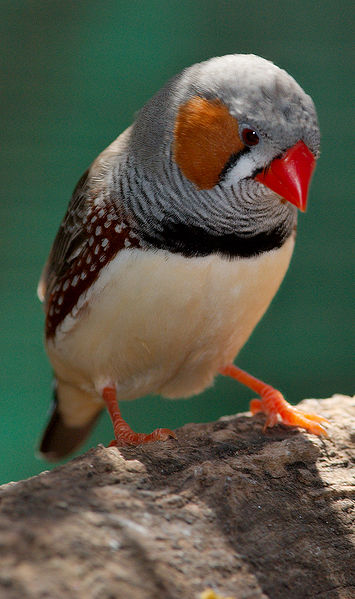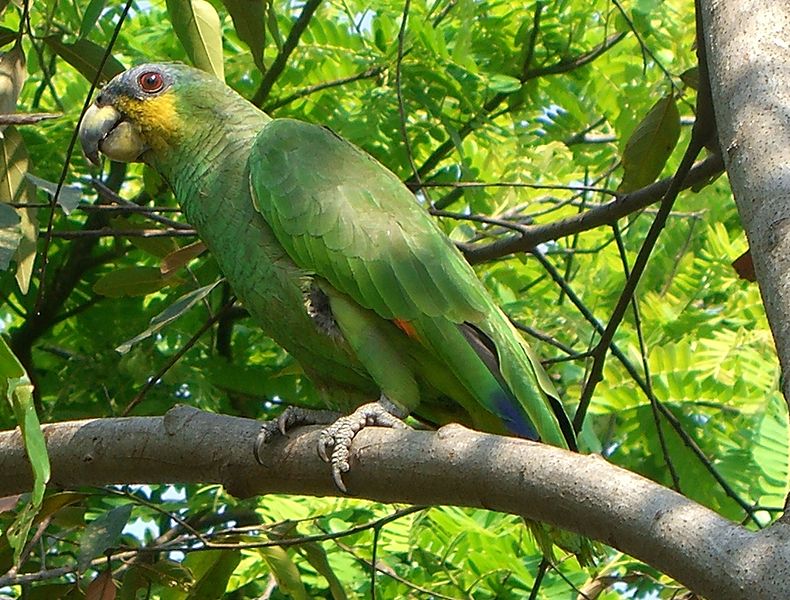 This magnificent parrot, also known as the Blue and Yellow Macaw (Ara ararauna) is something of an anomaly – rare in places, extinct in others, well known as a pet yet awe-inspiring even to veteran bird-keepers.
This magnificent parrot, also known as the Blue and Yellow Macaw (Ara ararauna) is something of an anomaly – rare in places, extinct in others, well known as a pet yet awe-inspiring even to veteran bird-keepers.
Range and Status
The Blue and Gold Macaw’s huge range stretches from Central America (southern Panama) south through Columbia to Ecuador and Northern Peru and southeast through Venezuela to Trinidad, French Guiana, Brazil, Bolivia, Paraguay and northern Argentina.
In some areas, an innate intelligence and adaptability, along with legal protections, have allowed it to remain the most commonly-encountered macaw. Elsewhere, however, its fate has been grim…indeed, the species disappeared from Trinidad by the early 1960’s (but has been re-introduced, please see below). Introduced populations thrive in Mexico, Florida and other places.
Habitat and Behavior
Blue and Gold Macaws favor forest edges, overgrown swamps and riverside palm stands, but they venture far afield while foraging. In Venezuela I observed them well out over the llanos (flooded grasslands), with not a tree in sight. In some regions they remain within thick forests during the dry season and spread out into open habitats as the rains arrive.
Like most parrots, these sociable birds utilize regular roosting sites, leaving at first light and foraging, sometimes at great distances, until sunset. The sight of a flock of Blue and Gold Macaws, backlit by the setting sun as they approach their roost, is among the most spectacular to be seen in the American tropics.
These huge birds always remain close to their mates…even within large flocks, paired birds, flying so that their wings are nearly touching, are easy to distinguish. As much or more so than any parrot, Blue and Gold Macaws thrive on company – single captives will languish without ample human companionship and stimulation.
Pet Pros and Cons
As pets, Blue and Gold Macaws have much to recommend them, but again they present us with two sides. They are, without question, one of the calmest of the macaws, and most are quite playful even as adults. When handled properly, they bond well with people and become most affectionate to their owners. Many develop impressive vocabularies as well, and they speak in deep tones that befit their size.
However, in common with their relatives, Blue and Gold Macaws demand a great deal of attention, have extremely loud voices, and require huge cages or outdoor aviaries along with near-daily out-of-cage time. Breeding birds sometimes undergo a drastic change in personality, becoming extremely aggressive to even long-favored caretakers.
Conservation Efforts
The Blue and Gold Macaw seems to be holding its own in some areas, while declining in others; its status in many regions has not been accessed. It is listed on Appendix II of Cites.
As mentioned, the Blue and Gold Macaw disappeared from Trinidad in the early 1960’s, a victim of habitat loss and over-collection. In 1999, conservationists based at the Cincinnati Zoo began the process of reintroducing this gorgeous bird to its former island home. Supported by private, government and corporate funds, wild-caught macaws were released and monitored over several years. Local people were recruited to observe and protect the birds, and to deter poachers. The “new” Blue and Gold Macaws were adopted by local schools as a flagship species, and are now thriving.
Further Reading
Blue and Gold Macaw video from the Cincinnati Zoo.
Other Macaw articles on ThatBirdBlog:
An Overview of Popular Macaws
Observing Wild Scarlet Macaws
Blue and Gold Macaw image referenced from wikipedia and originally posted by TonyBrierton and Snowmanradio
 Cowbirds, cuckoos and whydahs are well known brood parasites, meaning that females deposit eggs in the nests of other bird species and leave them to the care of their unsuspecting foster parents. Finch owners may be surprised to learn that some female Zebra Finches also use this reproductive strategy – but with a special twist.
Cowbirds, cuckoos and whydahs are well known brood parasites, meaning that females deposit eggs in the nests of other bird species and leave them to the care of their unsuspecting foster parents. Finch owners may be surprised to learn that some female Zebra Finches also use this reproductive strategy – but with a special twist. That Bird Blog – Bird Care and History for Pet Birds
That Bird Blog – Bird Care and History for Pet Birds



